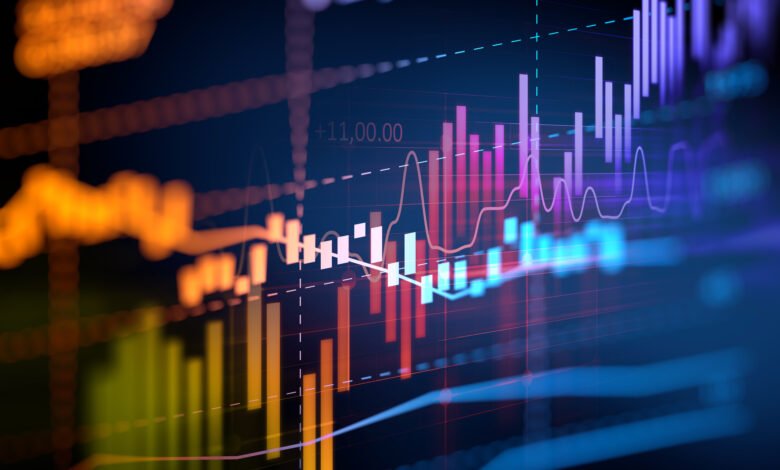Will This Be the Shortest Bull Market on Record? These 2 Recession Indicators Point to Yes.

Just two months ago, the new bull market became official.
The S&P 500 closed at a new all-time high of 4,839.81 on Jan. 19, and the broad market index has continued to rally since then, up more than 10% year to date at recent prices.
Investors have fully embraced the new bull market, driven by the boom in artificial intelligence (AI) and expectations that interest rates will come down, according to the Federal Reserve’s own forecast. Falling interest rates tend to grease the economy by making it easier to borrow, which helps a wide range of industries, including real estate, autos, and banking.
However, despite the seeming euphoria in the market, some economists are still convinced we’re headed for a recession. In fact, two closely watched indicators are both pointing toward a recession. Let’s take a look at each one and examine their implications for the economy and the stock market.

Image source: Getty Images.
1. The yield curve inversion
If you follow the stock market, you’ve probably heard about the inversion of the yield curve. This happens when long-term bond interest rates are lower than short-term ones.
Typically, interest rates go up as bond maturities go longer, as investors require greater compensation to hold fixed-income assets for a longer period of time. The yield curve tends to invert when investors expect interest rates to come down in the near term, which generally happens when the Federal Reserve cuts the benchmark fed funds rate to try to avert a recession or at least cushion the blow. In 2022, the Federal Reserve raised interest rates faster than it had in nearly 40 years to cool off the hottest inflation the U.S. had seen since the 1980s. That led to a bear market, the yield curve inversion, and sweeping recession forecasts.
An inversion of the yield curve, typically measured by the difference between the 2-year Treasury yield and the 10-year yield, has accurately predicted a recession every time it’s occurred since 1966. On that occasion, GDP fell sharply, but the economy did not enter a recession.
The 2/10 yield curve has been inverted since July 2022, and the gap has widened in recent weeks, as the chart below shows.
2 Year Treasury Rate data by YCharts
Based on that gap, it’s clear investors still expect the Fed to cut rates, and that typically happens because of a weakening economy.
2. The Sahm rule
Another popular recession indicator that appears to be on the verge of flashing red is the Sahm rule. Created by former Fed economist Claudia Sahm, this rule says that if the three-month average unemployment rate rises by 0.5 percentage points off the lowest reading within a year, the economy is headed for a recession.
In February, the unemployment rate rose to 3.9% in spite of strong job growth, and that was up half a percentage point from the 3.4% reading last April. While the three-month average has not yet reached the point that would signal a recession, it’s clearly nearing it based on February’s reading. A high March reading, for example, could trigger the rule by tipping the three-month-average above the threshold.
The Sahm rule has predicted every recession in modern U.S. history, as increases in the unemployment rate tend to portend sharp job losses as a recession hits. The chart below shows how upticks in the unemployment rate have coincided with recessions.
US Unemployment Rate data by YCharts
Is this time different?
In investing, saying “this time is different” is something of a trap. Fundamental rules of economics and investor behavior tend to repeat themselves, leading to asset bubbles and prices and valuations reverting to the mean. But there are a number of reasons to believe that the economy can escape a recession despite what the above indicators say.
First, we’re already near the longest period of time from the start of a yield inversion to the beginning of a recession, dating back to at least 1978, showing the yield curve indicator has not been as responsive this time around as it has been historically.
Additionally, the yield curve typically inverts when investors anticipate the economy softening. In this case, it inverted during a bear market because the Fed raised rates to cool inflation. That’s an important difference from the recent historical pattern, and it adds noise to the indicator’s predictability.
Regarding the Sahm rule, the unemployment rate is still historically low at less than 4%, and there’s a lot of noise in the data because the labor force has shrunk because of the pandemic. Just as important, job growth remains strong, indicating that the labor market is still robust. Sahm herself made it clear that her rule had not been triggered, stressing the importance of following the three-month average.
There are other reasons to believe that the economy could continue to expand. The AI boom has sparked a new race in the tech sector and beyond, with funding for new tech infrastructure and a surge in hiring for related roles. Consumer sentiment has been rising since mid-2022, whereas it typically declines ahead of a recession, and the new bull market also indicates economic optimism in spite of recessionary predictions.
Given the length of time the economy has bucked the yield curve indicator and the fact that the unemployment rate is still low, I think the economy will skate past a recession.
However, whatever happens, investors should remember that recessions are a normal part of the economic cycle, and that there’s still a risk of one happening, as Fed Chair Jerome Powell reminded us in December.
It’s also worth remembering that the U.S. stock market has recovered from every recession in its history, including the Great Depression, the Global Financial Crisis, and the coronavirus pandemic. That should help give you confidence to keep investing, no matter what happens in the near term.
Source link







